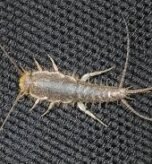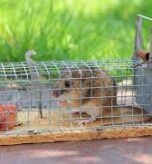Earwigs, easily recognized by their distinctive posterior pincers, are a common sight in gardens and occasionally inside homes. While their appearance can be unsettling, they are generally harmless to humans and pets. They do not bite, sting, or, despite popular myths, burrow into ears. However, a large earwig infestation can indicate underlying moisture issues and lead to significant plant damage. This guide outlines professional strategies for understanding, managing, and preventing an earwig infestation.
Understanding Earwigs: Identification and Behavior
What Are Earwigs?
Earwigs belong to the order Dermaptera and are typically under an inch long. They have elongated, flattened bodies, six legs, and, in most species, two pairs of wings, though they rarely fly. Their most notable feature is a pair of forceps-like pincers at the end of their abdomen, called cerci. Males usually have more curved pincers than females. As nocturnal creatures, they prefer dark, cool, and moist environments during the day.
The Good Side of Earwigs
Despite their pest status, earwigs can be beneficial. As omnivores, they are voracious predators of soft-bodied insects like aphids and mites. Furthermore, they contribute to a healthy garden ecosystem by feeding on decaying organic matter, which helps with decomposition and nutrient cycling.
How to Identify an Earwig Infestation
Recognizing the signs of an earwig infestation is the first step toward timely intervention.
Telltale Signs of an Earwig Problem
While seeing one or two earwigs is no cause for alarm, a persistent and numerous presence warrants attention. Key indicators include:
- Frequent Sightings: Seeing earwigs often, especially during the day, can signal a growing population.
- Plant Damage: Earwigs can cause significant damage to seedlings, annual flowers, and soft fruits like apricots and strawberries. Look for numerous irregular holes on leaves or shallow gouges in fruit. They can also damage corn by eating the silks.
- Foul Odor: Some earwig species release a foul-smelling liquid when disturbed. A funky odor in damp corners can be a sign of their presence.
- Droppings: You may find small, black pellets that resemble ground pepper near their hiding spots.
Common Hiding Spots for an Earwig Infestation
Earwigs actively seek out dark, cool, and moist places to hide during the day.
- Indoors: They are often found in basements, bathrooms, and kitchens, especially near sources of moisture. Cluttered areas like storage boxes and piles of paper also provide good refuge.
- Outdoors: Preferred hiding spots include under rocks, logs, mulch, and dense ground cover. They may also hide inside fruit that has already been damaged by other pests.
What Attracts an Earwig Infestation to Your Property?
Understanding the environmental conditions that attract earwigs is fundamental to managing an earwig infestation.
Moisture and Food Sources
Earwigs are moisture-loving insects. Consequently, sources of excess moisture like leaky pipes, clogged gutters, and overwatered gardens are highly attractive to them. In addition, they are drawn to decaying organic matter like leaf litter, compost, and rotting wood, which provide both food and shelter.
Exterior Lighting and Yard Clutter
Like many insects, earwigs are attracted to light at night. Exterior lighting can draw them toward your property, where they may seek entry. Yard clutter, such as construction materials, tarps, and woodpiles, offers them prime hiding spots.
A Comprehensive Guide to Managing an Earwig Infestation
Effective earwig management uses an integrated approach, prioritizing environmental changes and natural solutions before resorting to chemicals.
Environmental Modifications to Prevent an Infestation
The best way to manage an earwig infestation is to make your property inhospitable to them.
- Reduce Moisture: First, fix all leaky pipes and faucets. Ensure your gutters are clean and that water drains away from your foundation. Using a dehumidifier in damp basements is also highly effective.
- Eliminate Hiding Spots: Next, clear all debris from around your home, including leaf piles, grass clippings, and old newspapers. Avoid placing firewood directly against your foundation.
- Seal Entry Points: Then, inspect and seal all potential entry points into your home, such as cracks in the foundation and gaps around windows and doors.
- Adjust Your Lighting: Finally, consider replacing traditional outdoor light bulbs with yellow or sodium vapor lights, which are less attractive to insects.
Natural and DIY Control Methods for an Earwig Infestation
For minor to moderate problems, several natural and DIY solutions can be very effective.
- Trapping: Simple traps are highly successful.
- Oil and Soy Sauce Traps: Combine cooking oil and a small amount of soy sauce in a shallow container. The scent attracts earwigs, and they drown in the oil.
- Rolled Newspaper Traps: Place rolled-up, damp newspapers or cardboard tubes near affected plants. In the morning, shake the accumulated earwigs into a bucket of soapy water.
- DIY Sprays: A mixture of dish soap and water can be spritzed directly on earwigs. A solution of rubbing alcohol and water is also effective.
- Natural Repellents: Earwigs dislike strong scents. Planting herbs like rosemary, lavender, or mint around your home can naturally repel them.
- Encourage Predators: Attract natural predators to your yard, such as birds, toads, and lizards, by installing birdhouses and bird baths.
Chemical Control for a Severe Infestation
When an earwig infestation is severe and natural methods are not enough, you may consider chemical solutions.
- Insecticides: Products containing pyrethrin or carbaryl are effective. Insecticidal dusts like diatomaceous earth (DE) can be applied in cracks and crevices.
- Baits: Earwig baits can be placed around your home’s perimeter. Products containing spinosad are effective and considered environmentally sound.
- Safety Precautions: Always read and follow product labels carefully. Keep children and pets away from treated areas.
When to Call a Professional for an Earwig Infestation
For overwhelming or persistent infestations, a professional pest control service is your best option. Experts can locate the source of the infestation and develop a tailored treatment plan. The average cost for earwig extermination can range from £150 to £400, depending on the severity.
Conclusion
While earwigs are generally not a threat, a large earwig infestation can cause significant plant damage and indicate moisture issues. A multi-faceted approach that combines environmental modifications, natural remedies, and, if necessary, professional help provides the most effective solution. By understanding their behavior, you can maintain a healthy, earwig-free environment.



